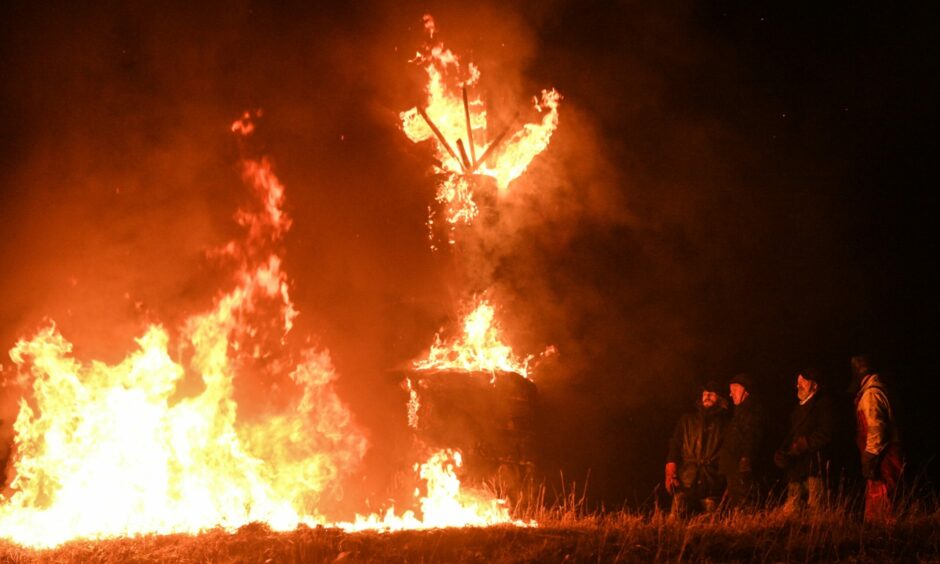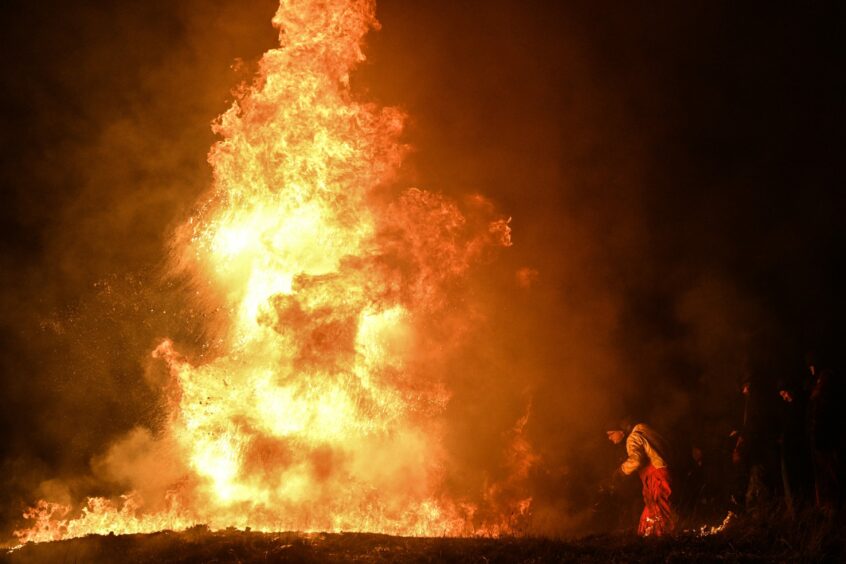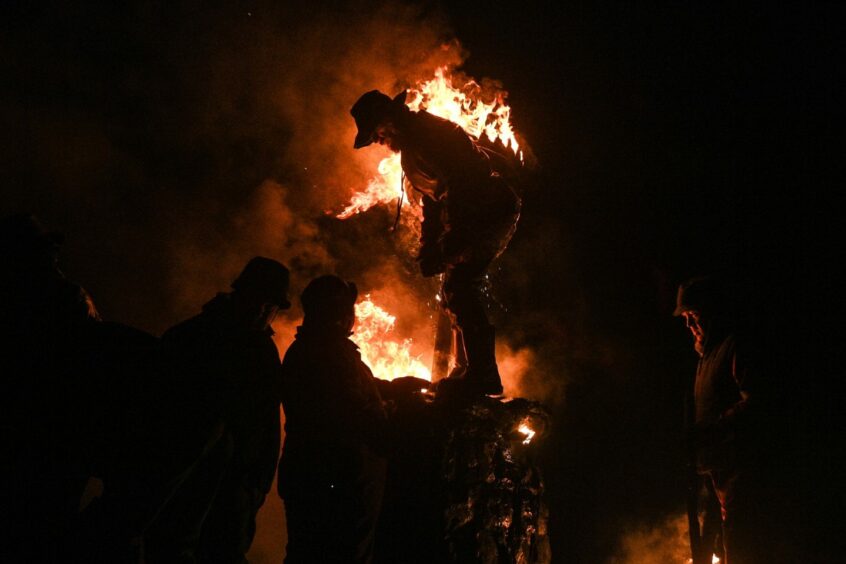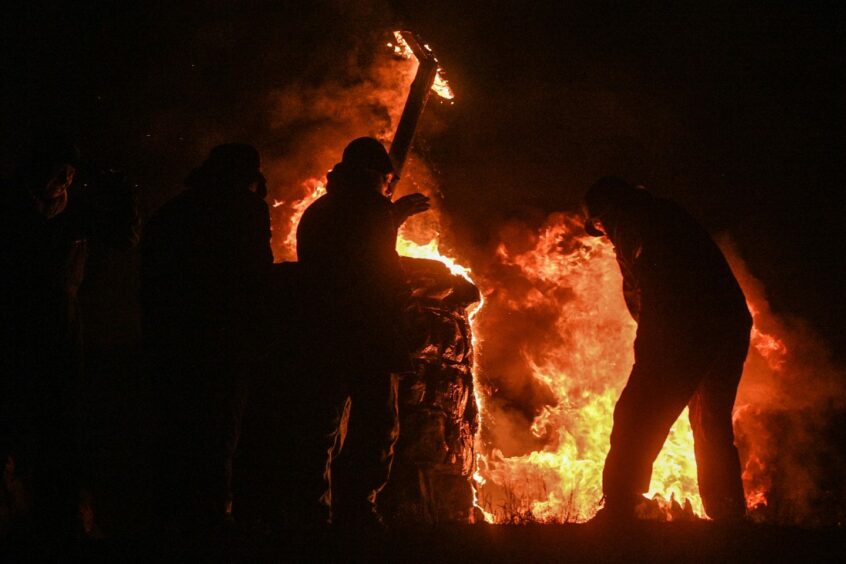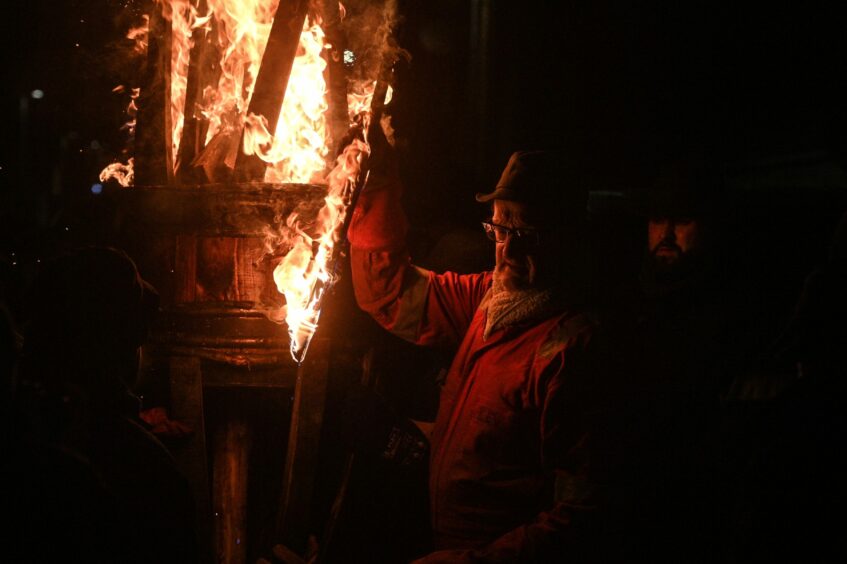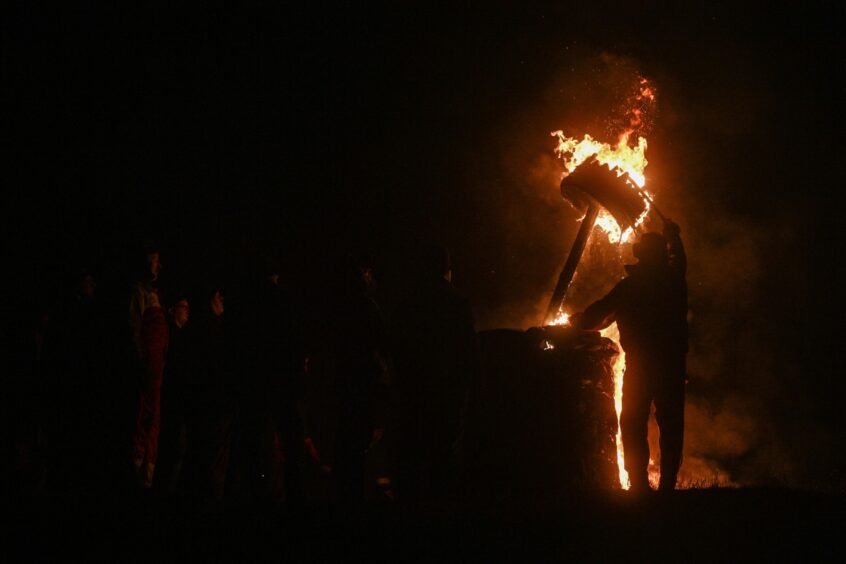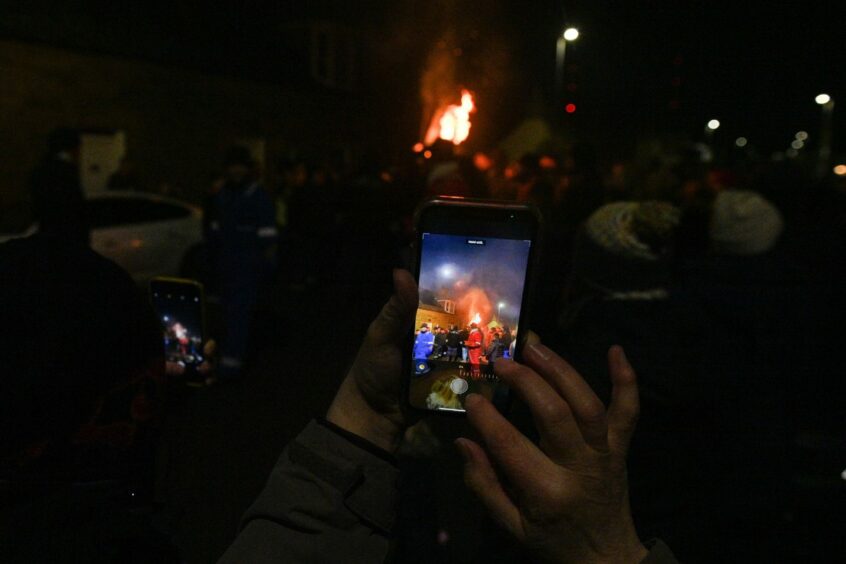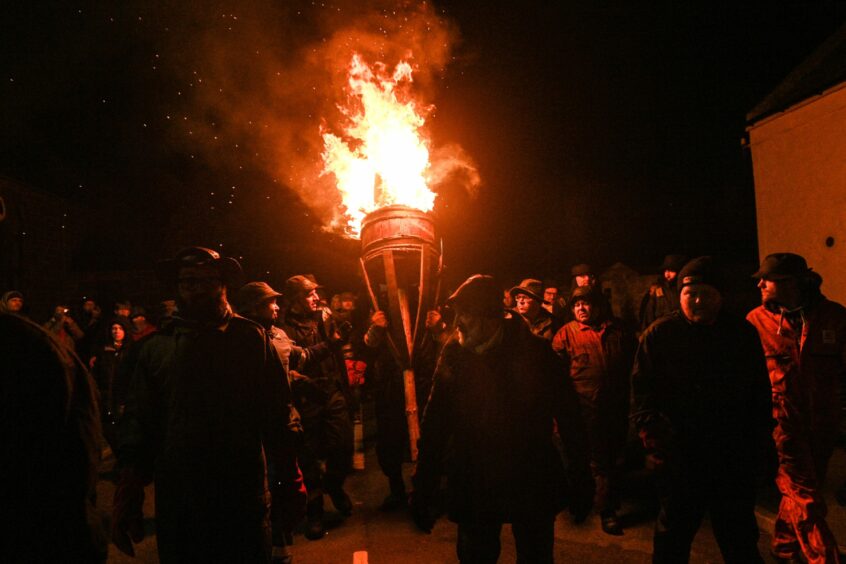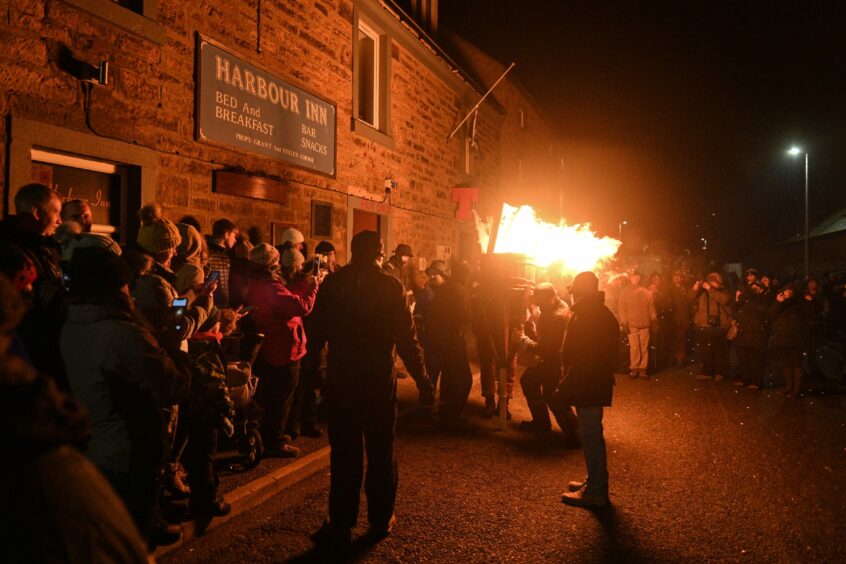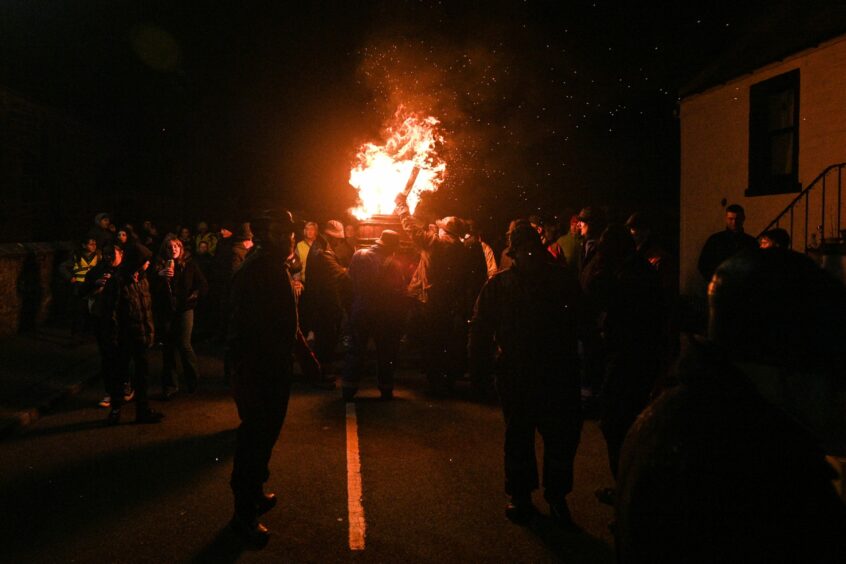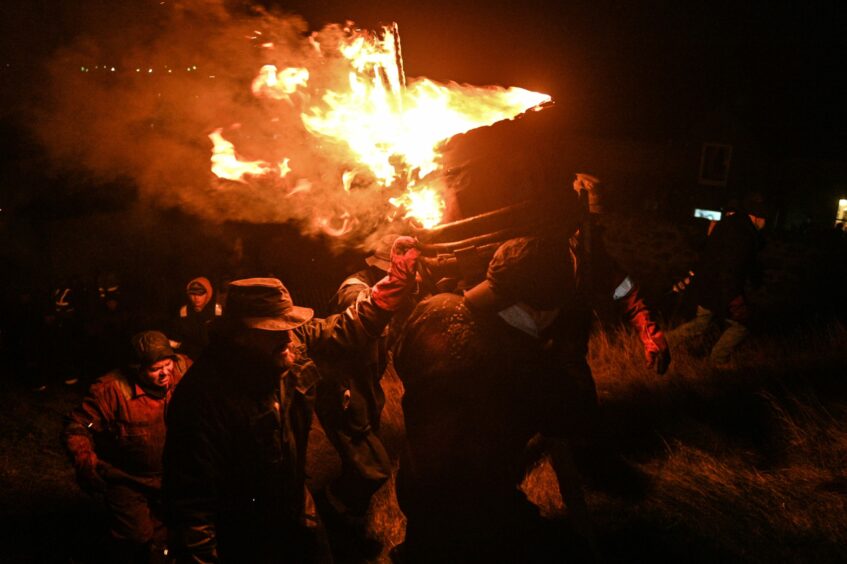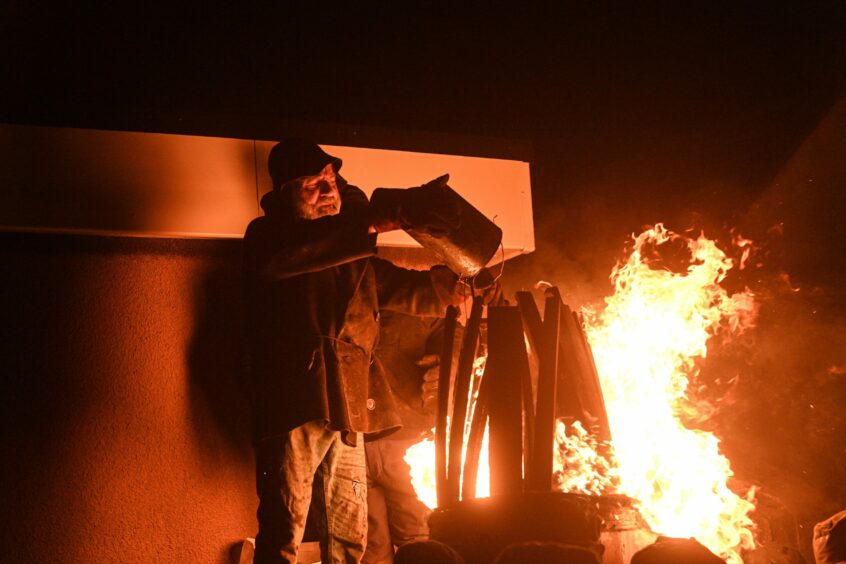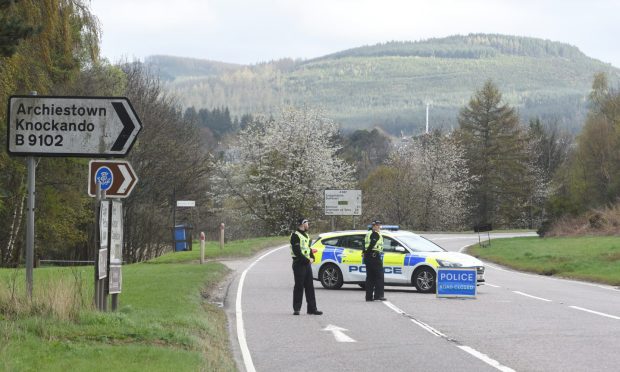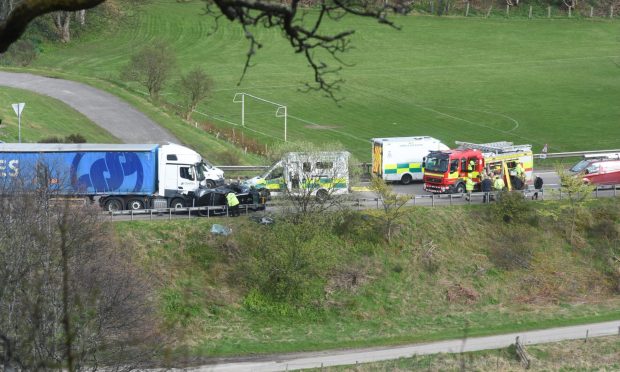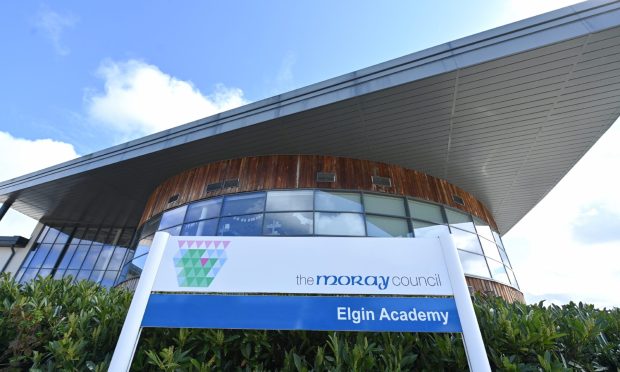After missing a year due to Covid, the Burning of the Clavie in Burghead returned in a blaze of glory.
And after the streets remained dark for the first time since the Second World War last year, the traditional wooden barrel refused to be darkened once again.
After being blasted by flammable creosote by Clavie crew members on the summit of Doorie Hill in the Moray village for more than 20 minutes – it refused to be toppled.
Men had to brave the flames with tools to finally bring the ancient tradition to a climax with the remains of the barrel crashing into the ground to great cheers from the hundreds watching.
Returning Clavie lights Burghead
The Burning of the Clavie is rigidly held on January 11, regardless of the weather.
Covid restrictions on outdoor gatherings resulted in this year’s event initially being cancelled.
However, when the Scottish Government announced the rules would be relaxed from January 17 – the Clavie crew hastily organised its return, which was held within hours of the regulations being eased.
Dave Hill, who runs the Station Hotel with his wife Kirsty, was the first to receive a charred stave from the Clavie in more than two years.
Said to bring good luck, the burnt remains are left at homes along a procession route through the town which traditionally includes pubs and businesses.
Mr Hill said: “You’re supposed to walk through the property, house, or whatever, from front door to back door and place it there to ward of evil spirits and demons.
“Last year it was so different because of lockdown, a few people had little ones in their back gardens, it’s really good to have it back.”
After a tour of the village, the Clavie crew hoisted the burning barrel to the summit of Doorie Hill, which once formed part of the rampart of an ancient Pictish fort.
There the large, though slightly smaller than previous years, crowd watched as crew members took it in turns to blast the Clavie with flammable creosote – shouting “hip hip” as they went.
Among the crowd was six-week-old Logan Thomson, whose grandfather Donald Tolmie is in the Clavie crew, which is strictly made up by men who have lived in Burghead and descended from other Brochers.
Jessica Reid, Logan’s mum, explained she hoped her baby would one day follow in her grandfather’s footsteps to keep the local tradition alive.
She said: “He’s just slept all the whole time, he doesn’t know what’s going on. Hopefully when he’s older he will be part of the crew, he’ll be part of it.
“It was really weird not having it last year. It’s felt a bit different having it on a different day this year, but I think it would have been more weird not having it at all again.”
History of Clavie night
The origins of the Burning of the Clavie in Burghead have been lost to time.
Nothing has been written down about why the ritual is performed every year.
All that is known has been passed down from generation to generation of Brochers.
It is believed the tradition may date as far back to the early days of settlements at Burghead, which was home to a Pictish fort from the late 3rd Century.
Surveys have established the encampment was one of the largest of its types in Scotland.
What is known about the Burning of the Clavie in Burghead is the significance of the date.
January 11 was previously Hogmanay on the ancient Julian calendar, which was used by Romans.
When it was updated in the 18th Century, the rest of Scotland moved the bells to what is now December 31.
However, defiant Brochers continued to insist on holding Clavie night on the day they had done for generations – meaning the small Moray community continues to bring in the New Year nearly two weeks later than the rest of Scotland.
Fire festivals were once common along the north-east coast with the Stonehaven Hogmanay fireballs being another survivor today.
Despite the flames, no matches are used to get the blaze started in Burghead.
Burning peat is brought from an ancient fireplace in a home in the village and is used to start the fire in the awaiting wooden Clavie outside.
